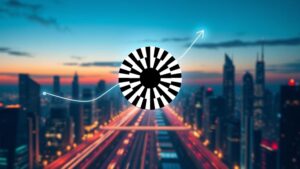Ever watched drone footage and wondered how it looks so smooth and cinematic? One of the secrets is a simple accessory: the ND filter. Think of them as sunglasses for your drone, ND filters are a must-have for any serious drone photographer or videographer. They give you control over light and unlock amazing creative possibilities.
#1 ND, or Neutral Density, filters reduce the amount of light that enters your drone's camera. They don't change the color or hue of the image; they simply darken the scene. This reduction is measured in "stops," with each stop representing a halving of light.
ND, or Neutral Density, filters reduce the amount of light that enters your drone's camera. They don't change the color or hue of the image; they simply darken the scene. This reduction is measured in "stops," with each stop representing a halving of light.
There are a few types of ND filters commonly used with drones:
Fixed ND Filters: These offer a specific amount of light reduction, such as ND4, ND8, or ND16.
Variable ND Filters (VND): These allow you to adjust the darkness by rotating the filter.
Hybrid Filters (ND/PL): These combine ND filtration with polarization to reduce glare and enhance colors.
Understanding ND Filters
 ND, or Neutral Density, filters reduce the amount of light that enters your drone's camera. They don't change the color or hue of the image; they simply darken the scene. This reduction is measured in "stops," with each stop representing a halving of light.
ND, or Neutral Density, filters reduce the amount of light that enters your drone's camera. They don't change the color or hue of the image; they simply darken the scene. This reduction is measured in "stops," with each stop representing a halving of light.There are a few types of ND filters commonly used with drones:
Fixed ND Filters: These offer a specific amount of light reduction, such as ND4, ND8, or ND16.
Variable ND Filters (VND): These allow you to adjust the darkness by rotating the filter.
Hybrid Filters (ND/PL): These combine ND filtration with polarization to reduce glare and enhance colors.
#2 Filter Light Reduction Use Case
Filter Light Reduction Use Case
ND2 1 stop ideal for shooting at dawn or dusk
ND4 2 stops Overcast days, early morning/late afternoon.
ND8 3 stops Partially sunny days.
ND16 4 stops Bright sunny days.
ND32 5 stops For shooting in the brightest conditions
ND64 6 stops Ideal to capture motion blur of objects in motion,eliminate glare from
reflective surfaces
ND Numbers definition
 Filter Light Reduction Use Case
Filter Light Reduction Use CaseND2 1 stop ideal for shooting at dawn or dusk
ND4 2 stops Overcast days, early morning/late afternoon.
ND8 3 stops Partially sunny days.
ND16 4 stops Bright sunny days.
ND32 5 stops For shooting in the brightest conditions
ND64 6 stops Ideal to capture motion blur of objects in motion,eliminate glare from
reflective surfaces
#3 ND filters offer several key benefits:
ND filters offer several key benefits:
Achieving Cinematic Shutter Speeds:
-The 180-degree shutter rule suggests that your shutter speed should be twice your frame rate for the most natural-looking motion blur.
-ND filters allow you to achieve this, especially in bright conditions.
Avoiding Overexposure:
- Shooting in bright sunlight can easily lead to overexposed footage.
- ND filters prevent this, ensuring your images retain detail.
Reducing the "Jello" Effect:
- The jello effect, a wavy distortion, can occur due to the drone's vibrations.
- Using ND filters allows for faster shutter speeds, reducing this effect.
Enhancing Colors and Reducing Glare:
- ND/PL filters reduce glare and reflections, making skies bluer and water clearer.
Why Use ND Filters on Your Drone
 ND filters offer several key benefits:
ND filters offer several key benefits:Achieving Cinematic Shutter Speeds:
-The 180-degree shutter rule suggests that your shutter speed should be twice your frame rate for the most natural-looking motion blur.
-ND filters allow you to achieve this, especially in bright conditions.
Avoiding Overexposure:
- Shooting in bright sunlight can easily lead to overexposed footage.
- ND filters prevent this, ensuring your images retain detail.
Reducing the "Jello" Effect:
- The jello effect, a wavy distortion, can occur due to the drone's vibrations.
- Using ND filters allows for faster shutter speeds, reducing this effect.
Enhancing Colors and Reducing Glare:
- ND/PL filters reduce glare and reflections, making skies bluer and water clearer.
#4 Selecting the right ND filter depends on the lighting conditions. A sunny day requires a stronger filter (like ND16 or ND32), while an overcast day might only need an ND4 or ND8. Many drone pilots use light meter apps to measure the light intensity and determine the appropriate filter.
Selecting the right ND filter depends on the lighting conditions. A sunny day requires a stronger filter (like ND16 or ND32), while an overcast day might only need an ND4 or ND8. Many drone pilots use light meter apps to measure the light intensity and determine the appropriate filter.
Consider the quality of the filter. Glass filters generally offer better image quality than resin filters. Researching brands is also a good idea.
Choosing the Right ND Filter
 Selecting the right ND filter depends on the lighting conditions. A sunny day requires a stronger filter (like ND16 or ND32), while an overcast day might only need an ND4 or ND8. Many drone pilots use light meter apps to measure the light intensity and determine the appropriate filter.
Selecting the right ND filter depends on the lighting conditions. A sunny day requires a stronger filter (like ND16 or ND32), while an overcast day might only need an ND4 or ND8. Many drone pilots use light meter apps to measure the light intensity and determine the appropriate filter.Consider the quality of the filter. Glass filters generally offer better image quality than resin filters. Researching brands is also a good idea.
#5 Installation: Carefully screw or clip the filter onto your drone's camera lens.Use a microfiber cloth and lens cleaning solution to clean the ND Filters.
Installation: Carefully screw or clip the filter onto your drone's camera lens.Use a microfiber cloth and lens cleaning solution to clean the ND Filters.
Camera Settings: Adjust your ISO, aperture, and shutter speed to achieve the desired exposure. Pay attention to white balance to ensure accurate colors.
Test Shots: Always take test shots before flying. Fine-tune your settings based on the results.
How to Use ND Filters on Your Drone
 Installation: Carefully screw or clip the filter onto your drone's camera lens.Use a microfiber cloth and lens cleaning solution to clean the ND Filters.
Installation: Carefully screw or clip the filter onto your drone's camera lens.Use a microfiber cloth and lens cleaning solution to clean the ND Filters.Camera Settings: Adjust your ISO, aperture, and shutter speed to achieve the desired exposure. Pay attention to white balance to ensure accurate colors.
Test Shots: Always take test shots before flying. Fine-tune your settings based on the results.
#6 ND filters open up a world of creative possibilities:
ND filters open up a world of creative possibilities:
Landscapes: Capture smooth, silky water and cloud movement.
Cityscapes: Create motion trails of cars and people.
Events: Film concerts or sports events in bright daylight.
Creative Applications
 ND filters open up a world of creative possibilities:
ND filters open up a world of creative possibilities:Landscapes: Capture smooth, silky water and cloud movement.
Cityscapes: Create motion trails of cars and people.
Events: Film concerts or sports events in bright daylight.
#7
- ND filters reduce light without affecting color.
- They are essential for cinematic shutter speeds and avoiding overexposure.
- Match the filter to the lighting conditions.
Elevate Your Drone Photography and Videography
ND filters are a game-changer for drone photography and videography. They help control light, achieve cinematic shutter speeds, avoid overexposure, and enhance colors. If you're serious about capturing stunning aerial footage, ND filters are an essential tool.- ND filters reduce light without affecting color.
- They are essential for cinematic shutter speeds and avoiding overexposure.
- Match the filter to the lighting conditions.






